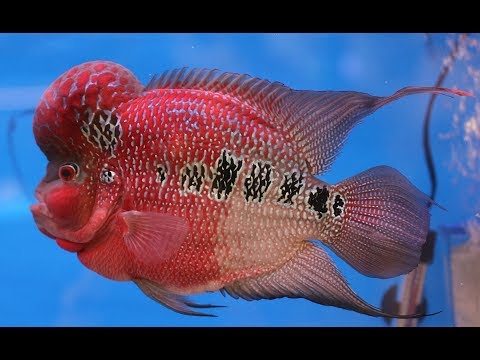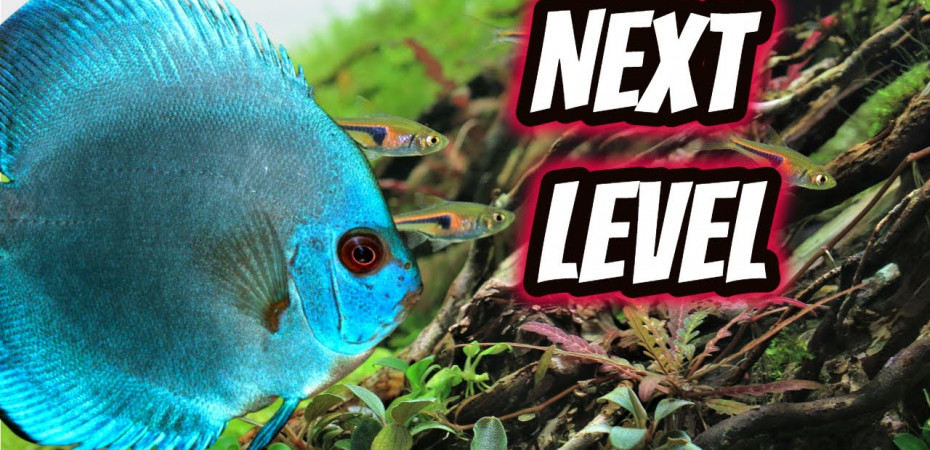Keeping Bettas, aka Siamese Fighting Fish
5 years ago admin 0
Characteristics of The Best Betta Fish Tanks
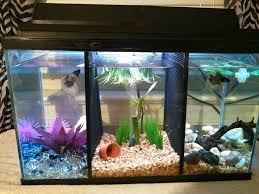
Bettas are among the most interesting and low-maintenance fish you can keep. And their ability to breathe atmospheric oxygen and live in very small volumes of water allows them to be housed in a variety of small aquaria that can complement any home or office. However, there are some important considerations to bear in mind when shopping around for the perfect tank for your pet siamese fighting fish. Please read on as we discuss these issues and our own opinions on what to look for in a small betta tank. You can then see a fine selection of these tanks on Amazon.com
Adequate Size
Yes, it’s true that a betta can live in a small bowl, if it had to. But this is not the most fulfilling life for such a regal fish. In addition, very small bowls are prone to heating and cooling extremely rapidly, as well as suffering quickly from pollution. This can easily occur from even slight overfeeding. As a general rule of thumb, we suggest a minimum tank size of one gallon to keep one adult betta. Of course, your siamese fighting fish would be happy if you provided a larger aquarium. However a gallon container is generally sufficient so long as it is diligently maintained.
Bettas can also be housed in community tanks, but take care not to keep them with fish that tend to nip fins. For example, tiger barbs are notorious for fin nipping, and will shred a betta’s fins very quickly. Shredded fins are not just a cosmetic issue, unfortunately. A betta with badly torn fins can easily die from stress and/or secondary infections like ick/fungus.
A Good, Tight Fitting Cover
Bettas are not what I’d consider big time “jumpers,” but they can and will jump when given half a chance. Sometimes osmotic or other stress will cause them to jump. Also sometimes they will leap simply because the can. To minimize risk of such escape, for whatever reason, do yourself a favor and put a lid on the tank. Be careful though to leave some air space between the surface of the water and the cover. These fish are air breathers and need to gulp air occasionally.
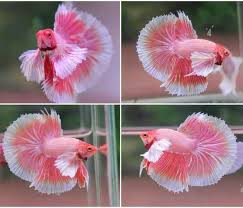
No Strong Currents or Water Movement
This is a consideration that I often see overlooked, especially in some of the smaller betta tanks. Bettas have evolved to thrive in still or stagnant waters where this no little or no current. And, as a consequence of this design, they are unhappy when subjected to currents. These are typically generated by hang on back filters or powerful aeration. Bettas require water that is either still, or very placid. They do not require aeration of any kind, especially when properly maintained and in a tank by themselves.
If you do use a filter at all, make sure that the tank is large enough (e.g., 3 gallons or more) or the filter can be dialed down (e.g., an air release valve on an aquarium pump) such that the betta does not need to exert effort to maintain its position in the water column. If your betta is getting pushed around or fighting to stay still, it will put constant stain on the fish. This can eventually lead to disease or death.
Bare Floor or Fine Substrates
Bettas don’t need or want any substrate in their tanks. In fact, bare bottom tanks are best for you and the betta since they facilitate easy clean up. If you do want to add some colorful gravel, however, keep it sparse and opt for relatively small grained types, rather than the large, marble-sized gravel that is often sold for small decorative bowls/tanks. Very coarse gravel makes a great trap for uneaten food, which then decays and causes potentially lethal ammonia spikes. Finer gravel (pea-sized or smaller) allows the fish to get at food that lands on the bottom, and still allows you to see when food is left uneaten and needs removal. Both of which is better for your fish.
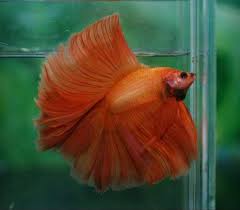
Regular Light Cycles
Fish, like most vertebrates, react profoundly to light cycles. As a species that lives close to the equator, your betta will expect a photoperiod of roughly 12 hours of daylight and 12 hours of darkness. If you don’t use artificial lighting, you don’t need to provide any. You should avoid turning the lights on late at night when your fish is preparing to “sleep.” Also, try to purchase a tank that uses LED lighting. LED lights are by far the most efficient and long-lasting type you can buy, and also generate the least amount of unwanted heat.
Warm Temperatures
Unlike goldfish, for example, which can thrive in very cold water, betta are a very tropical fish. In their native waters of Southeast Asia, they rarely experience temperatures below 76 F. Consequently, you should always aim to keep your bettas at a minimum temperature of 72F. With a temperature of 78F being ideal. Siamese Fighting fish can certainly withstand cooler temps for short durations. Note that extended exposure to water temperatures below 72F make them lethargic and highly vulnerable to infections and diseases, particularly fin rot, ick, and fungus.
Individual Housing
Although female bettas can be kept together, males cannot be kept with other males or females. The only exception to this rule is if you are attempting to breed bettas, in which case the male will tolerate the female (grudgingly) only until the eggs are laid, after which time he will attack and kill her if the tank is not large enough for her to escape his line of sight.

Good Water Quality
Whatever you do, you must keep a betta’s water clean. This means that periodic water changes should be conducted, which involve removing any debris from the bottom of the tank. A good rule of thumb is to change between 30-50% of the water per week. This keeps the water fresh without changing things too drastically. Make sure to use dechlorinated water and try to match the temperature of the new water to the old water.
Placement in a Calm Area, Away From Direct Light
You wouldn’t want to live next to a 6-lane highway, and neither would your betta, so keep the tank somewhere away from heavy foot traffic. It’s difficult enough living your life in a small transparent container, don’t make matters more stressful by locating the tank where your betta will be subject to constant movement and/or vibrations. Also, locate the tank away from direct sunlight, which can cause rapid temperature spikes and encourage algae growth.
Simplicity
If you’ve chosen a tank of sufficient size, keep the betta by itself, maintain proper temperatures and keep up with regular water changes, there’s not much else you need. Be wary of vendors that try to sell lots of accessories for beta-only tanks, like sophisticated filters, lighting, etc. These things are usually unnecessary.
Feeding your Betta
Keeping your Betta fish happy and at the top of his health has a lot to do with what you feed him. Betta fish can be notoriously picky eaters, but will eat with enthusiasm food they like, including things they shouldn’t be eating. In order to keep your fish looking and feeling their best, you need to pay close attention to what and how you feed them.
Don’t Overfeed Your Betta
Siamese fighting fish can be really expressive. So expressive that you may feel tempted to feed them more than they should, because given the way they attack the food they like, the poor things must be starving! That is just not true. Your fish is fine with feeding once a day a moderate amount of high quality food, they just like making a big show of it. You should feed enough food to be eaten within 2 minutes, because overfeeding will just end up causing a dirty tank which is the perfect growing ground for bacteria instead of healthy Bettas. A bit of a rounded belly is OK, as you don’t want your fish to be too thin, but a definitely rounded shape is a sign that you are feeding your pet too much. Remember, they can eat themselves to death if you aren’t careful.
Bettas Like Interesting Food
Betta fish are inquisitive by nature, and they need an exciting environment with plenty of things to investigate in order to be happy and active. Food is not an exception. Your fish will appreciate if you change the menu every so often, just to keep things interesting. Siamese fighting fish love live food, particular worms and brine shrimp that you can buy at your local fish store. Or in some cases even breed yourself. However, be careful because they will absolutely eat all of it. Sometimes they can end up having issues due to overfeeding.
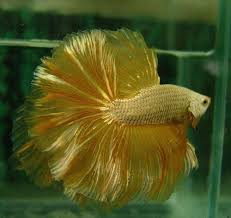
But They Hate Plain Stuff
Forget about just buying plain tropical fish flakes or pellets and hoping your Siamese Fighting fish will eat them. Unless your fish is absolutely starving they will just give you the evil eye and ignore your offering of boring fish food. Even if you get your fish to eat that sort of food, it will lack on the necessary protein for good coloring. Then your fish will look lackluster and sluggish. Don’t do that to your beloved pets, and treat them to specific Siamese fighting fish pellets. Or frozen and dried live food. They will appreciate it, and they will look all the brighter and happier with a good diet.
Advertisement Siamese Fighting fish pellets on Amazon.com

